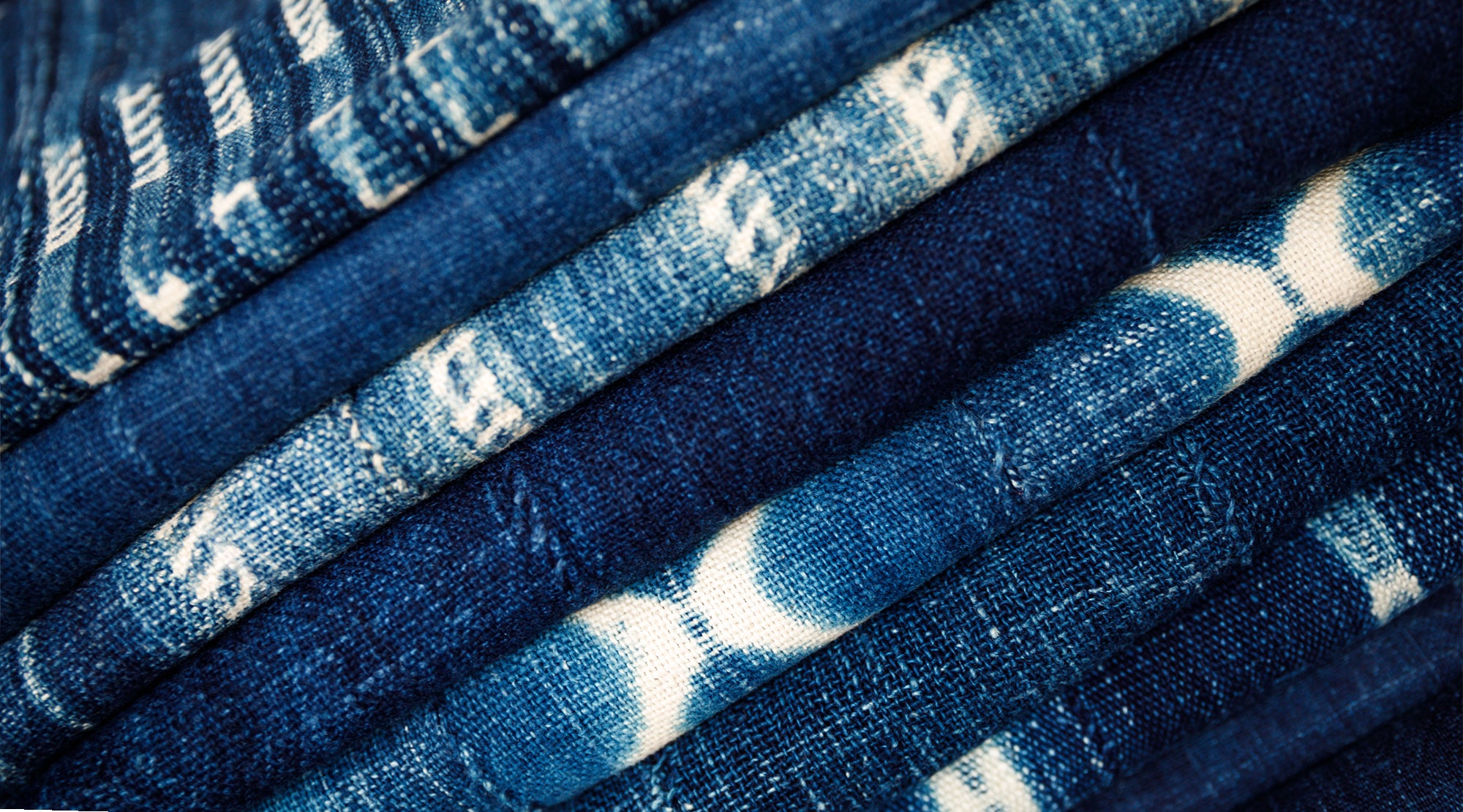
A long, long time ago in the time of legends, when the world was new and God and humans shared the same space, there lived a woman who felt a great hunger for beauty and colour beyond any other that had ever been known. She wished for the colour of the sky, for thunder-blue hair and for linen that was not simple white cotton. In those ancient days, it was entirely possible to eat pieces of the sky, which filled the eater with incredible, wondrous joy. But it was a dangerous business – one could become completely lost to the world when filled with sky-joy.
The woman could not help her longing and she devoured the sky until, as punishment, God pulled the sky far above the heads of the people, leaving behind only its colour. Now the sky, and God, was out of reach of mortals but the people and their children, and their children’s children, all still hungered for the sky and her colours and tried to satiate their hunger by creating their own sky on earth with materials dyed with the bluest of blue – indigo.
That gorgeous story comes from an old Liberian folktale. What a beautiful image. Bringing the colour of the sky down to earth. I guess if you imagine the browns, reds and oranges in the landscape of much of West Africa, that owning something that was bright and the colour of the never-ending blue sky itself really was like owning a piece of magic. Even elsewhere in nature it is still rare to be able to access a blue like it, mysterious and intriguing. You can see exactly why indigo was treasured and woven into folklore.

And indigo dye really does deserves the title of legend. It has roots stretching back through the centuries; from ancient Mesopotamian civilisations to the Romans and from ancient India across continents to West Africa, where it is still an important part of culture and day to day life. Indigo was the foundation of centuries-old textile traditions throughout West Africa and material dyed with indigo was a source of great wealth, and also a way for women to accrue their own wealth as they collected and stored the precious cloth. Indigo made its way across the oceans to the Americas as part of the slave trade where the indigo dye cakes were given the name ‘blue gold’, becoming one of the most precious commodities in South Carolina.
Now you might have guessed that the indigo we’re talking about is the natural version. In Africa, the process of creating the dye is fascinating, typically prepared using fresh or dried leaves in a deep pit or vat. There, with a bit of skill, the green-yellow dye transform into intense blue in front of your eyes, a natural chemical process which just seems magical. Not quite the same stuff that goes into making your blue jeans, although the seemingly never-ending supply of denim is a testament to the continuing popularity and value of indigo around the globe.

Nowadays, with growing interest in raw and organic dyes and materials, natural indigo is enjoying a bit of a rebirth in interior design and fashion circles. Indigo can be both stimulating and exciting or calming and reassuring, depending on the tones, texture and how you use it.

At Lola & Mawu we’re truly excited by the interior design possibilities of indigo fabric – bringing striking blues into your home whilst retaining a natural, organic texture and hue. Our indigo textiles include one of a kind vintage wrap cloths from Mali, which have been treasured and loved over decades before they find a new life as part of our collection; we’re also really thrilled with our new throws from a recent trip to the artisans of Burkina Faso. Try introducing an intriguing flourish of colour with an indigo throw draped on the back of an armchair or sofa, or celebrate the unique patterns and textures as a bold wall hanging. Perhaps even pair a throw with a recycled vintage indigo storage basket from our collection, rolled up ready for snuggling up on a chilly evening. Superbly, recycled indigo fabric that can’t be used again provides the fibre to make our eco-friendly baskets!

And, as always with Lola & Mawu, you know that all our products provide meaningful income to the artisans who make our beautiful homewares. Now that’s some really powerful magic.



